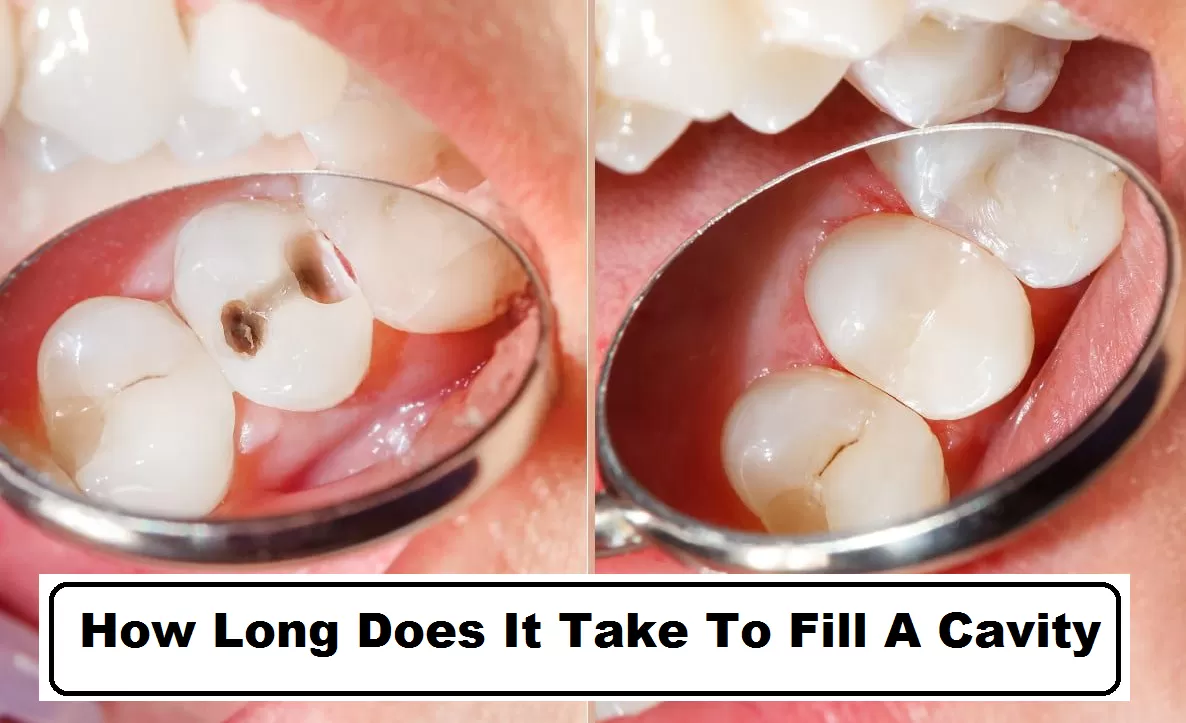Fill A Cavity
Cavities are different; some may require more extensive dental procedures than others. The most common type is the coronal cavity, which affects the crown or top of your teeth. Coronal cavities can be treated with a simple dental filling procedure, which usually takes 30-60 minutes, depending on the extent of the damage.
Another type is the root cavity, which forms below the gum line and often requires more complex treatment. Root cavities can spread deep inside your tooth and may need a root canal treatment or even an extraction if left untreated.
Recurrent cavities also develop around existing fillings or crowns due to factors such as poor oral hygiene, tooth decay, or general wear and tear. These cavities will require additional dental work to repair them effectively. The length of time it takes to fill a cavity varies from person to person depending on several factors like severity, location, and general health of your mouth.
Dental cavity treatment
The duration of filling a cavity depends on the size and location of the cavity. Generally, it takes around 20-45 minutes to fill a single cavity. However, if you have multiple cavities requiring treatment, it may take longer.
The process begins with administering local anesthesia to numb the area around the tooth. Once the tooth is numb, your dentist will remove any decayed portion using a drill or laser. Afterwards, they will disinfect the area before placing your chosen filling material – composite resin or amalgam.
Some patients may experience sensitivity or discomfort after receiving a filling for a few days. This discomfort usually subsides on its own without requiring any additional treatment. Your dentist may recommend avoiding hard foods and practising good oral hygiene habits to prevent further cavities from developing in other teeth.
Tooth filling procedure
The tooth filling procedure is a common dental treatment that involves removing and replacing decayed or damaged tooth material with a filling material. During the process, the dentist will numb your mouth with local anesthesia, remove the affected area of your tooth, and then fill it with a restorative material such as composite resin or amalgam.
The time it takes to fill a cavity can vary depending on the location and size of the hole. Typically, a simple filling procedure can take 30 minutes to an hour. However, it may take longer if the decay has spread deeper into your tooth or if you need multiple fillings in one appointment.
It’s important to note that getting a filling is usually not painful during or after the procedure. You may experience mild discomfort during the numbing process and feel sensitivity for a few days, but this can be managed with over-the-counter pain relievers. Overall, getting a tooth filling is a routine dental treatment that can help prevent further damage to your teeth and maintain optimal oral health.
How long does a cavity-filling appointment usually take?
Various factors influence the duration of a cavity-filling appointment. First, the size and location of the cavity will determine how long it will take to fill it. A small hole that is easily accessible can be filled in less than 30 minutes, while a larger one that is harder to access may take longer.
The filling material used also plays a role in determining the length of the appointment. Traditional amalgam fillings are quicker to place than composite fillings since they require fewer steps during installation.
Lastly, the experience level of your dentist or dental hygienist can affect how long your appointment takes. An experienced professional will work more efficiently and accurately than someone new to filling cavities.
In summary, a typical filling appointment for an average-sized cavity can last around 30-60 minutes from start to finish. It’s important to remember that time spent in the chair ultimately depends on several factors and varies between patients.
What are the different types of cavity fillings?
The process of filling a cavity is relatively quick and straightforward. The amount of time it takes to fill a hole can vary depending on the size and location of the cavity. In most cases, filling a cavity only takes about 30 minutes to an hour.
There are two main cavity fillings: amalgam and composite (tooth-coloured). Amalgam fillings are made of silver, copper, tin, and mercury. These are durable and long-lasting but can be more noticeable than composite fillings.
Composite fillings, on the other hand, are made out of resin material that matches the color of your teeth. They blend in seamlessly with your natural teeth, making them virtually unnoticeable. Composite fillings may not last as long as amalgam ones but are still highly effective in treating cavities.
Overall, filling a simple cavity is a quick and easy procedure that can be completed in just one visit to the dentist’s office using either amalgam or composite material, depending upon personal preference or dental needs.
How long does it take to fill a cavity?
The time duration for filling a cavity depends on the hole’s size, location and complexity. Generally, filling a single cavity can take around 20-30 minutes. However, larger cavities or those that are difficult to reach may take longer as the dentist must remove all decay before filling the tooth.
The filling material can also affect the time it takes to fill a cavity. For example, composite resin fillings require careful layering and curing with a special light which takes longer than placing an amalgam filling. Additionally, if multiple cavities need to be filled in one visit, this can add extra time as each one needs to be carefully evaluated and treated.
Overall, it is best to discuss with your dentist how long you should expect your specific treatment to take. They can provide an estimate based on their evaluation of your dental health and any necessary treatments.
Frequently Asked Questions
How long does it take to fill a cavity?
Generally, filling a cavity takes 20 minutes to an hour or more. The duration of the procedure depends on several factors, such as the size and location of the cavity, as well as other circumstances.
What happens during a cavity-filling appointment?
The dentist will first examine your tooth and take necessary X-rays to determine the extent of decay in your tooth. After administering local anesthesia, your dentist will remove any decayed portion with a drill or laser. Next, they will shape the prepared area for the filling material you have chosen (metal amalgam or composite resin). Finally, they will apply and cure (harden) each layer using a special light before polishing it.
Will there be any pain during or after my cavity filling?
You shouldn’t feel pain during cavity filling because you’ll receive local anesthesia before starting. However, after this wears off, some sensitivity and discomfort may occur for 24-48 hours. Your dentist may recommend over-the-counter pain relievers to help reduce any discomfort you experience following your treatment.










